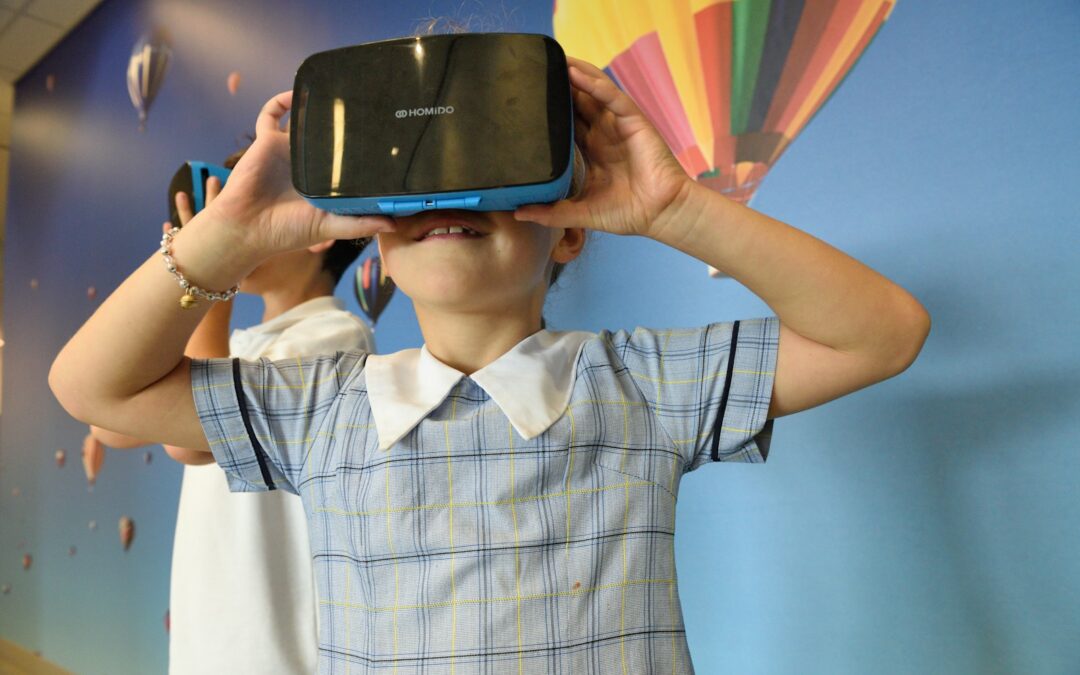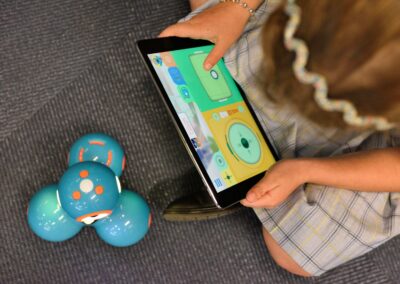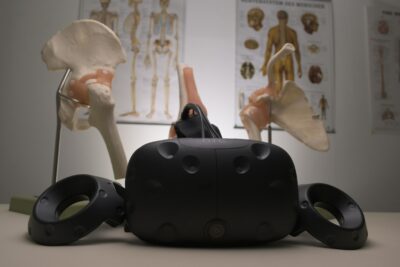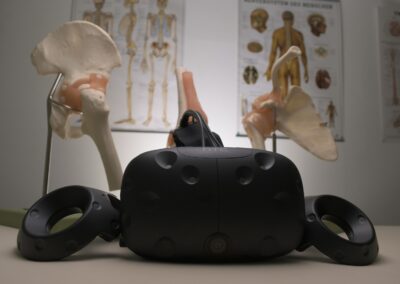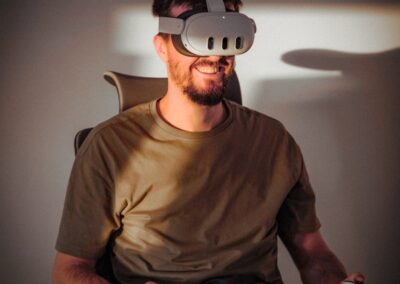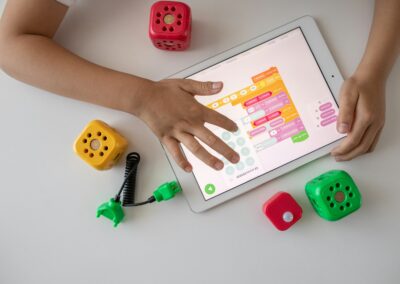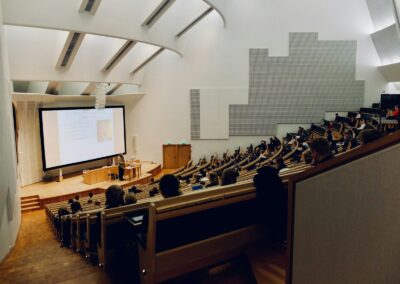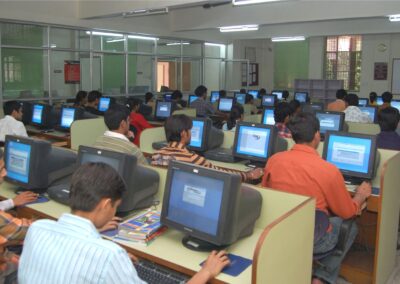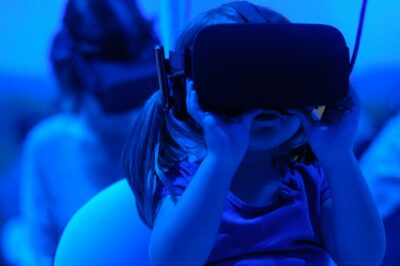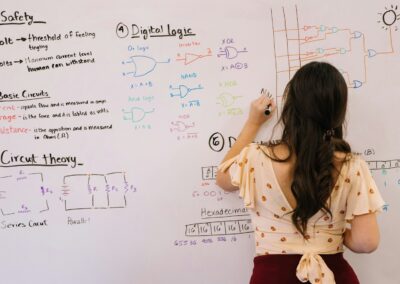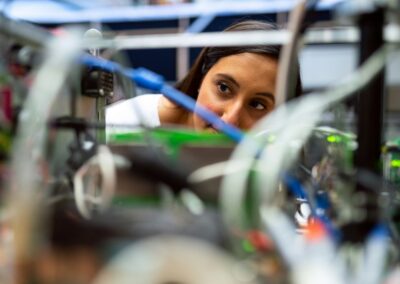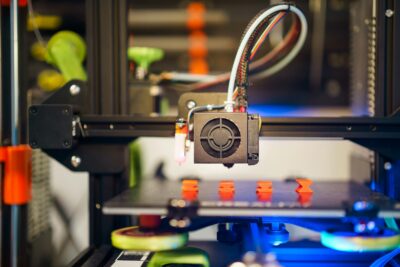Introduction to Virtual Labs in Modern Education
The Role of Virtual Labs in Enhancing Practical Learning
Implementing virtual labs in education has become a transformative approach, particularly in regions like Saudi Arabia and the UAE, where there is a strong emphasis on technological advancement and innovative education solutions. Virtual labs offer a unique opportunity to enhance practical learning experiences by providing a simulated environment where students can perform experiments and engage in hands-on activities without the limitations of physical lab spaces.
Virtual labs leverage cutting-edge technologies such as Artificial Intelligence (AI), Augmented Reality (AR), and Virtual Reality (VR) to create immersive and interactive learning experiences. These technologies allow students to explore complex concepts, conduct experiments, and visualize results in a controlled and safe environment. This approach not only improves students’ understanding of theoretical concepts but also prepares them for real-world applications.
In the context of Saudi Arabia and the UAE, the adoption of virtual labs aligns with the broader educational goals of these nations to become leaders in science, technology, engineering, and mathematics (STEM) education. By integrating virtual labs into the curriculum, educational institutions can provide students with the skills and knowledge required to excel in the modern, technology-driven world, thereby contributing to the economic and technological development of these regions.
Technological Foundations of Virtual Labs
Designing effective virtual labs involves integrating several advanced technologies that work together to create an engaging learning environment. Key technologies include AI, AR, VR, and cloud computing. AI plays a crucial role in personalizing the learning experience, providing real-time feedback, and simulating complex scenarios. AR enhances the real-world environment by overlaying digital information, making it easier for students to understand abstract concepts and visualize data.
VR offers a fully immersive experience, allowing students to interact with 3D models and perform experiments in a virtual space. This is particularly beneficial for subjects that require practical, hands-on learning, such as biology, chemistry, and engineering. Cloud computing provides the necessary infrastructure to support virtual labs, enabling seamless access to resources and data from anywhere at any time.
Incorporating these technologies into the educational framework requires careful planning and implementation. Institutions need to ensure that the technology stack is compatible and can be integrated seamlessly to provide a cohesive learning experience. Additionally, they must invest in the necessary technical infrastructure, such as high-speed internet and powerful computing devices, to support these technologies.
Steps to Implementing Virtual Labs in Education
The process of implementing virtual labs in education involves several critical steps. The first step is to define the educational objectives and outcomes. This involves understanding what the institution aims to achieve through the virtual labs, such as improving student engagement, enhancing learning outcomes, or providing access to high-quality education to remote areas. Clear objectives will guide the selection and implementation of appropriate technologies.
The next step is to choose the right technology stack. This involves selecting the appropriate VR and AR tools, AI-powered learning platforms, and cloud computing solutions. It’s essential to ensure that these technologies are compatible and can be integrated seamlessly to provide a cohesive learning experience. Institutions should also consider the technical infrastructure required to support these technologies, such as high-speed internet and powerful computing devices.
Once the technology stack is in place, the next step is to design the virtual lab environment. This involves creating virtual labs that are visually appealing and functional. The design should consider the user experience, ensuring that students can navigate the virtual environment easily and interact with the learning materials effectively. This step may also involve creating or sourcing 3D content, developing interactive elements, and setting up assessment tools.
Impact and Advantages of Virtual Labs
Enhanced Learning Outcomes Through Interactive Experiences
One of the primary benefits of using virtual labs in education is the enhancement of learning outcomes. Virtual labs provide students with interactive and engaging experiences that can significantly improve their understanding of complex concepts. By allowing students to visualize and interact with 3D models, virtual labs make learning more dynamic and memorable. This hands-on approach helps students retain information better and apply their knowledge more effectively in real-world situations.
Moreover, virtual labs enable students to experiment with different scenarios and variables in a risk-free environment. This fosters critical thinking and problem-solving skills, as students can explore various outcomes and learn from their mistakes without any real-world consequences. This experiential learning approach is particularly beneficial for subjects that require practical application, such as science, technology, engineering, and mathematics (STEM).
In regions like Saudi Arabia and the UAE, where there is a strong emphasis on STEM education, virtual labs can play a crucial role in preparing students for future careers in these fields. By providing students with practical, hands-on learning experiences, virtual labs can help bridge the gap between theoretical knowledge and practical application, ensuring that students are well-equipped to meet the demands of the modern workforce.
Accessibility and Flexibility in Education
Virtual labs also offer significant advantages in terms of accessibility and flexibility. Traditional labs often require significant resources, including physical space, equipment, and materials. This can limit the availability of lab experiences, particularly for students in remote or underserved areas. Virtual labs, on the other hand, can be accessed from anywhere with an internet connection, making high-quality education more accessible to a broader range of students.
Additionally, virtual labs provide flexibility in terms of time and scheduling. Students can access virtual labs at any time, allowing them to learn at their own pace and according to their own schedules. This is particularly beneficial for adult learners, working professionals, and students with other commitments. By removing the constraints of physical labs, virtual labs can accommodate diverse learning needs and preferences, providing a more inclusive and equitable education experience.
In the context of Saudi Arabia and the UAE, where educational innovation and accessibility are key priorities, virtual labs can help achieve these goals by providing flexible and accessible learning solutions. By leveraging the power of technology, educational institutions can ensure that all students have access to high-quality education, regardless of their location or circumstances.
Cost-Effectiveness and Sustainability
Another significant benefit of virtual labs is their cost-effectiveness and sustainability. Traditional labs require substantial investments in physical infrastructure, equipment, and materials, which can be expensive to maintain and update. Virtual labs, on the other hand, can be more cost-effective in the long run, as they do not require physical space or materials and can be updated and expanded with relatively low costs.
Virtual labs also offer sustainability benefits by reducing the need for physical resources and minimizing waste. For example, in a virtual chemistry lab, students can conduct experiments without using actual chemicals, reducing the environmental impact and associated costs. This aligns with the broader goals of sustainability and environmental responsibility, which are increasingly important in today’s world.
In regions like Saudi Arabia and the UAE, where there is a strong focus on sustainability and innovation, virtual labs can support these goals by providing cost-effective and environmentally friendly education solutions. By investing in virtual labs, educational institutions can reduce their environmental footprint while still providing high-quality, hands-on learning experiences for their students.
Conclusion
The benefits of virtual labs in education are manifold, offering enhanced learning outcomes, accessibility, flexibility, cost-effectiveness, and sustainability. In regions like Saudi Arabia and the UAE, where educational innovation and technological advancement are key priorities, virtual labs can play a crucial role in transforming the education landscape. By leveraging advanced technologies such as AI, AR, VR, and cloud computing, educational institutions can create engaging and interactive learning environments that prepare students for the challenges and opportunities of the modern world.
As technology continues to evolve, the potential of virtual labs will only increase, offering new and exciting possibilities for education. By embracing these innovations and fostering a culture of continuous improvement, educational institutions can ensure that they are providing students with the skills and knowledge needed to succeed in the rapidly changing world. Ultimately, the implementation of virtual labs can contribute to the overall economic and technological development of regions like Saudi Arabia and the UAE, positioning them as leaders in the global education landscape.
—
#VirtualLabs #EducationTechnology #PracticalLearning #HandsOnLearning #SaudiArabia #UAE #Riyadh #Dubai #ArtificialIntelligence #Blockchain #Metaverse #ExecutiveCoaching #GenerativeAI #ModernTechnology #BusinessSuccess #LeadershipSkills #ManagementSkills #ProjectManagement

